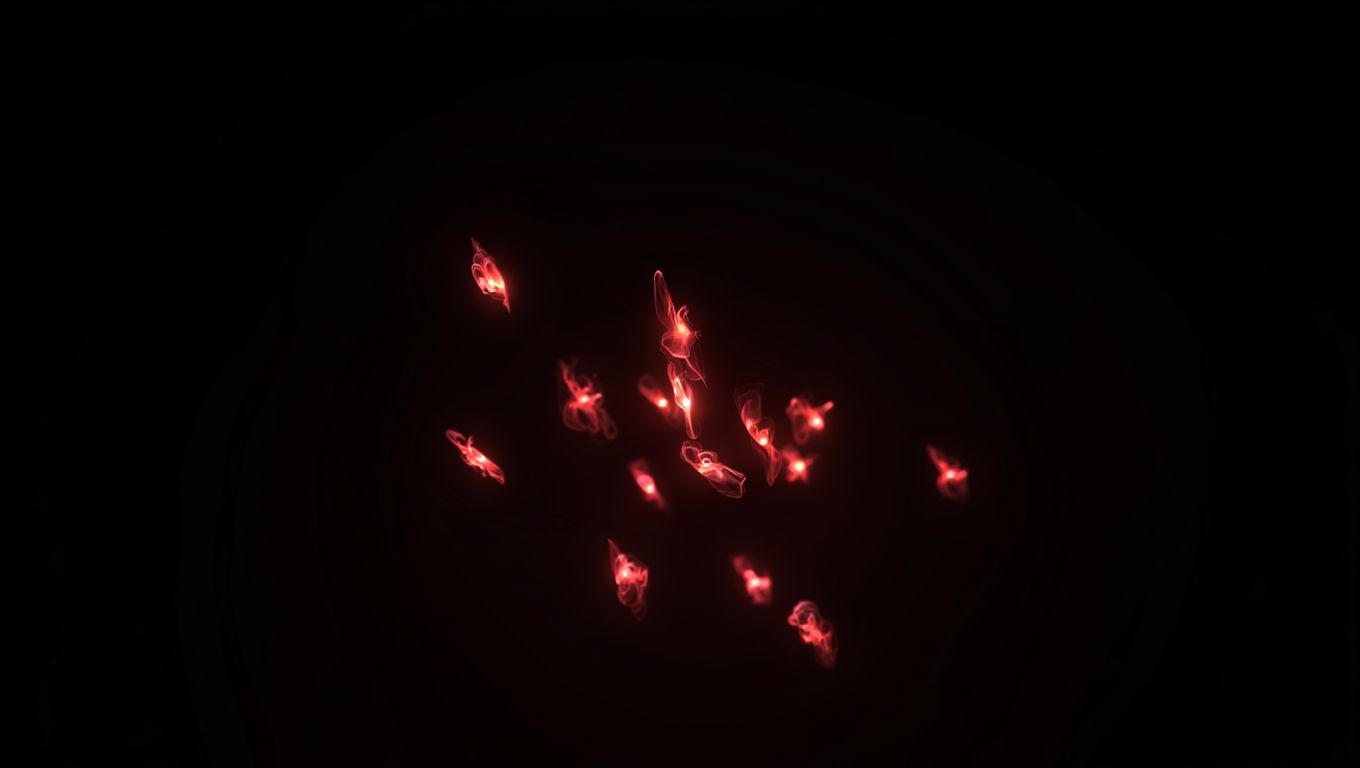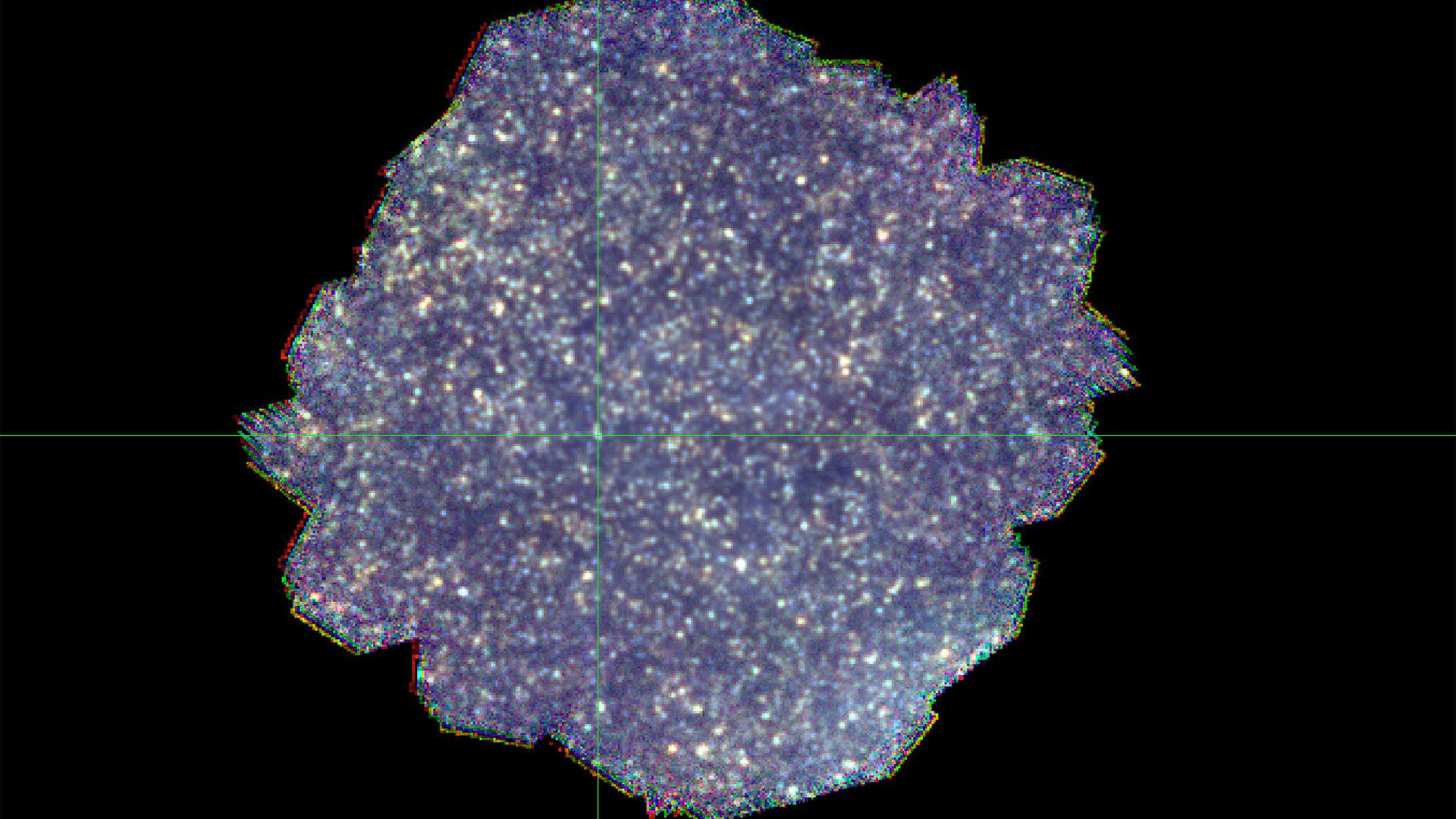Discovery of a hidden population of galaxies 👀
Published by Adrien,
Source: Monthly Notices of the Royal Astronomical Society
Other Languages: FR, DE, ES, PT
Source: Monthly Notices of the Royal Astronomical Society
Other Languages: FR, DE, ES, PT
Follow us on Google News (click on ☆)
They used 141 images taken by the Herschel satellite, specialized in infrared light. By superimposing them, they created the deepest infrared image ever obtained. This method revealed nearly 2,000 very distant galaxies. Some were likely completely unknown until now.

When an image is blurry or too crowded, some galaxies become invisible because they are too close together or too faint to be distinguished. Scientists therefore used mathematical tools to analyze small variations in light within the image. This allowed them to estimate how many galaxies are present in these blurred areas without seeing them directly.
These results suggest that an entire population of galaxies is "hidden," as they evade detection by conventional telescopes. These galaxies could help us better understand the formation of the Universe.
The Herschel satellite, which operated from 2009 to 2013, observed infrared light emitted by cold or distant objects. Its main instrument, SPIRE, observed the same patch of sky regularly for four years. These observations, stored in archives, continue to contribute to new discoveries more than ten years after the mission ended.
Researchers note that about half of the light produced by stars is absorbed by cosmic dust and then re-emitted in infrared. Without this type of observation, this portion of the Universe's energy remains undetected. The "hidden" galaxies identified here could explain part of this "missing" energy in current models.

Composite image of the SPIRE deep field, combining three infrared wavelengths.
The spots represent individual galaxies or galaxy groups.
Credit: Chris Pearson et al.
A new space mission called PRIMA is currently under consideration to go even further. This project, led by an international team, proposes a 1.8-meter (5.9-foot) telescope dedicated to far-infrared observations. It is one of two finalist projects to become NASA's next major mission, with a budget of one billion dollars.
The results of this study were published in the Monthly Notices of the Royal Astronomical Society. They highlight the importance of continuing to exploit the Herschel satellite archives, as well as the need for more advanced instruments to confirm these observations.
Why is infrared crucial for studying the Universe?
Many stars are born in dust clouds. This dust blocks visible light. But infrared light passes through these clouds.
This allows infrared telescopes to see what others cannot: forming stars, distant or hidden galaxies, and very cold objects. It is estimated that 50% of the energy from stars in the Universe is emitted as infrared light.
Infrared is therefore essential for obtaining a complete picture of the Universe. It complements observations made with visible light and radio waves.
Future missions like PRIMA will enable even finer observations of these hidden regions of the Universe.
How do astronomers study invisible galaxies?
Some galaxies are too faint or too distant to be seen individually. Others are lost in blurry or crowded images. To detect them, scientists use statistical techniques.
They measure small variations in brightness in a deep image. This allows them to estimate the number of galaxies present, even if they cannot be seen one by one. This method is called P(D) analysis.
It transforms what looks like "noise" or blurry spots into scientific data. Here, it helped detect a possible population of hidden galaxies.
But to study them in more detail, more sensitive telescopes will be needed—ones capable of distinguishing them individually and observing at other wavelengths.